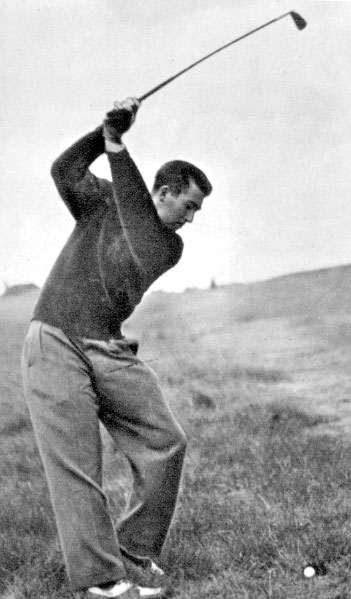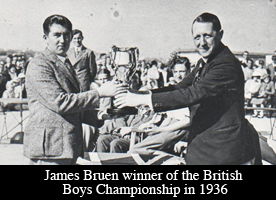mail order Lyrica  When I was in Northern Ireland recently, I saw a photograph of a golfer I knew nothing about: Jimmy Bruen, shown above, who was born in Belfast in 1920 and held the course record at Royal County Down for twenty-nine years. He won the British Boys’ Championship, at Royal Birkdale, when he was sixteen.
When I was in Northern Ireland recently, I saw a photograph of a golfer I knew nothing about: Jimmy Bruen, shown above, who was born in Belfast in 1920 and held the course record at Royal County Down for twenty-nine years. He won the British Boys’ Championship, at Royal Birkdale, when he was sixteen.
He played in the Walker Cup two years later, and was credited by his teammates with inspiring Britain and Ireland’s first-ever victory over the United States (and their last until 1971). He had qualified for the team by shooting 71-71-68-72 on the Old Course at St. Andrews, a feat that caused Henry Cotton, who had won the Open in 1934 and 1937, to write: “Fancy a 17-year-old doing 282 in four rounds on the Old Lady of St. Andrews. I know what a stern course it is, long, difficult and tricky, but here was a mere boy playing it with a wise head and a technique which left everyone gasping.”
That technique—which came to be known as the Bruen Loop—was highly unconventional, as you can see in the photo at the top of this post and in the video below. The British golf writer Pat Ward-Thomas described it this way:
He drew the club back outside the line of flight and turned his wrists inward, to such an extent that at the top of the swing the clubhead would be pointing in the direction of the teebox. It was then whipped, no other word describes the action, inside and down into the hitting area with a terrible force. There was therefore in his swing a fantastic loop, defying all the canons of orthodoxy, which claims that the back and downswing should, as near as possible, follow the same arc. There must have been a foot or more between Bruen’s arcs of swing.
Bruen routinely drove the ball over three hundred yards, and he had a deadly short game. (He won the British Boys’ by chipping in for eagle on the twenty-seventh hole of the final, making him eleven up with nine holes to play.) He lit up Irish golf before the war, and he won the first post-war British Amateur, in 1946. (He was the first Irishman ever to win it.) Cotton called him “the best golfer—professional or amateur—in the world.” He was widely favored to win the 1946 Open, but withdrew because, he said, his business left him insufficient time to practice. (He was an insurance broker.) He severely injured his wrist while working in his garden in 1947, and, following surgery that was only semi-successful, virtually stopped playing competitive golf. His last Walker Cup was 1951. He died in 1972, at the age of fifty-one.
Ward-Thomas wrote: “Bruen was the most fascinating golfer I have ever seen or probably will ever see. There was no limit to what he might have achieved had not the War come and had he so desired.” George F. Crosbie published a biography in 1999. The Golfing Union of Ireland established the Jimmy Bruen Shield in his memory in 1978.



